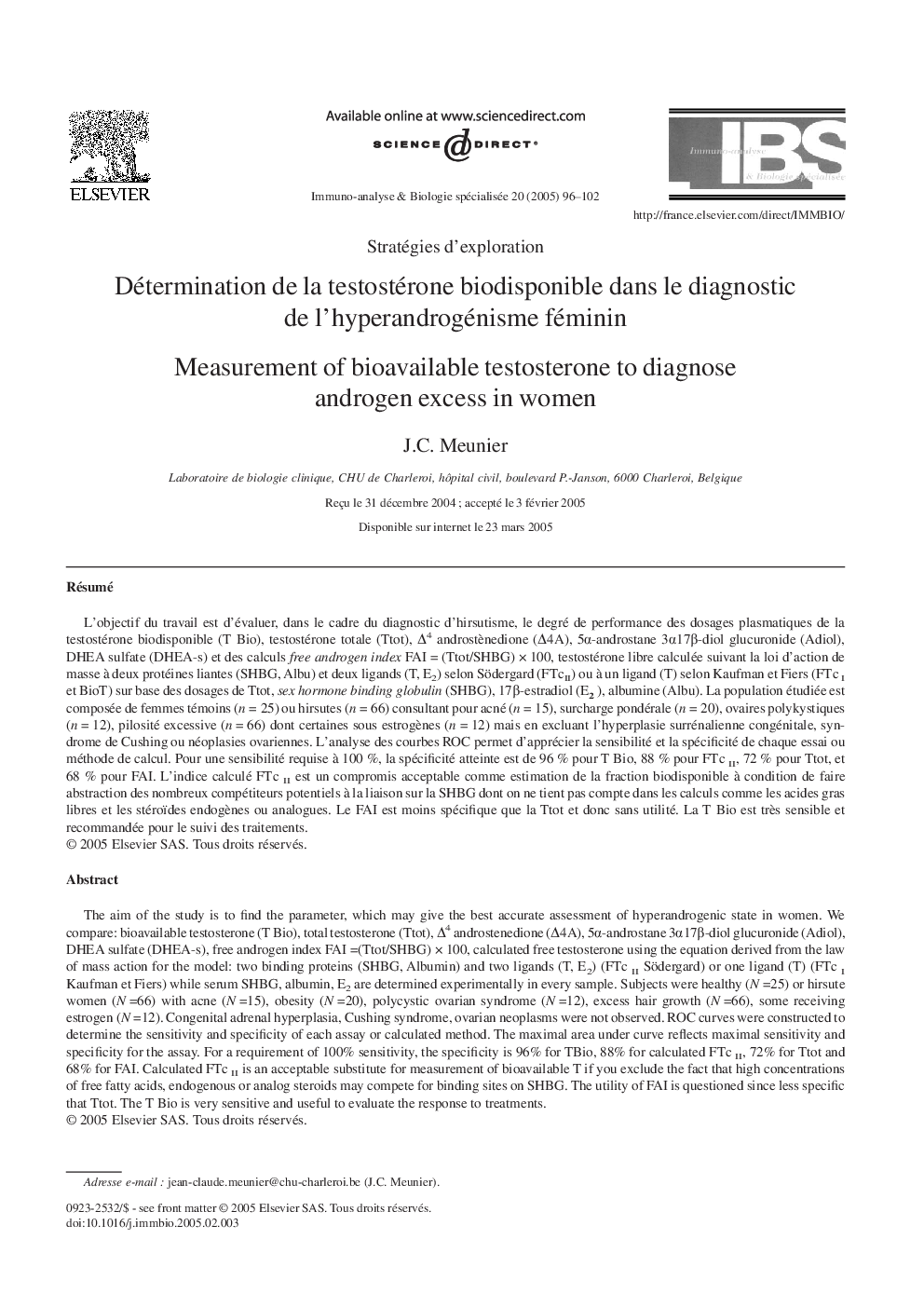| Article ID | Journal | Published Year | Pages | File Type |
|---|---|---|---|---|
| 9912957 | Immuno-analyse & Biologie Spécialisée | 2005 | 7 Pages |
Abstract
The aim of the study is to find the parameter, which may give the best accurate assessment of hyperandrogenic state in women. We compare: bioavailable testosterone (T Bio), total testosterone (Ttot), Î4 androstenedione (Î4A), 5α-androstane 3α17β-diol glucuronide (Adiol), DHEA sulfate (DHEA-s), free androgen index FAI =(Ttot/SHBG) Ã 100, calculated free testosterone using the equation derived from the law of mass action for the model: two binding proteins (SHBG, Albumin) and two ligands (T, E2) (FTc II Södergard) or one ligand (T) (FTc I Kaufman et Fiers) while serum SHBG, albumin, E2 are determined experimentally in every sample. Subjects were healthy (N =25) or hirsute women (N =66) with acne (N =15), obesity (N =20), polycystic ovarian syndrome (N =12), excess hair growth (N =66), some receiving estrogen (N =12). Congenital adrenal hyperplasia, Cushing syndrome, ovarian neoplasms were not observed. ROC curves were constructed to determine the sensitivity and specificity of each assay or calculated method. The maximal area under curve reflects maximal sensitivity and specificity for the assay. For a requirement of 100% sensitivity, the specificity is 96% for TBio, 88% for calculated FTc II, 72% for Ttot and 68% for FAI. Calculated FTc II is an acceptable substitute for measurement of bioavailable T if you exclude the fact that high concentrations of free fatty acids, endogenous or analog steroids may compete for binding sites on SHBG. The utility of FAI is questioned since less specific that Ttot. The T Bio is very sensitive and useful to evaluate the response to treatments.
Keywords
Related Topics
Life Sciences
Biochemistry, Genetics and Molecular Biology
Cell Biology
Authors
J.C. Meunier,
